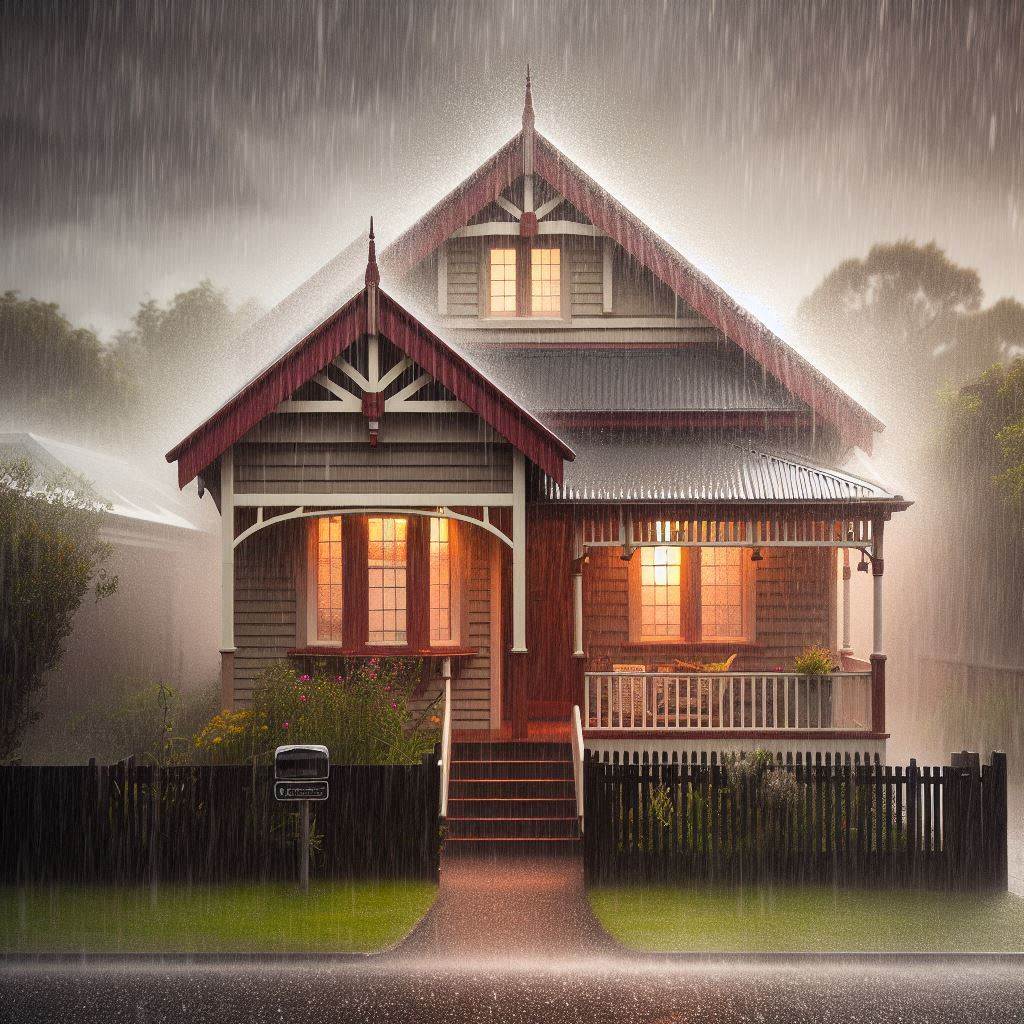
Floods can wreak havoc on homes, causing extensive damage to plasterboard walls and ceilings. In Australia, where extreme weather events are becoming more frequent, it’s essential to know how to protect your property. This guide provides detailed steps on how to prepare for floods, respond effectively, and recover efficiently, focusing on minimising damage to plasterboard. Whether you live in a flood-prone area or want to be prepared for potential disasters, these best practices will help you safeguard your home and investment.

Understanding Flood Risks in Australia
Types of Floods
Australia experiences various types of floods, each with unique risks:
- Riverine Flooding: Common in Australia’s major river systems, often due to prolonged rainfall.
- Flash Flooding: Sudden and severe floods typically caused by intense rainfall in a short period.
- Coastal Flooding: Results from storm surges, high tides, and severe weather events.
- Urban Flooding: Occurs in cities due to inadequate drainage systems during heavy rain.
Causes of Flooding
Flooding in Australia can be triggered by several factors, including:
- Heavy or prolonged rainfall
- Rapid snowmelt in alpine regions
- Storm surges and cyclones
- Dam or levee failure
Flood-Prone Areas in Australia
Certain regions are more susceptible to flooding, such as low-lying areas, coastal zones, and regions near major river systems like the Murray-Darling Basin. Understanding your flood risk can help you take appropriate precautions.
Preparing Your Home for a Flood
Creating an Emergency Plan
Develop a comprehensive emergency plan that includes:
- Evacuation routes and meeting points
- Contact information for family members and emergency services
- A communication plan to stay in touch during a flood
Assembling a Flood Kit
Prepare an emergency kit with essentials, including:
- Non-perishable food and water
- Flashlights and batteries
- First aid supplies
- Medications and personal hygiene items
- Important documents and cash
Safeguarding Important Documents
Keep important documents like passports, insurance policies, and financial records in a waterproof container. Consider digital backups stored securely online.
Protecting Plasterboard Before a Flood
Elevating Utilities
Raise electrical panels, heating systems, and appliances above potential flood levels to prevent damage and ensure safety.
Sealing Basement and Lower Levels
Waterproof your basement and lower levels by sealing cracks and installing proper drainage systems to prevent water ingress.
Installing Sump Pumps
A sump pump can help remove water from your basement during a flood, reducing damage to plasterboard and speeding up recovery.
Home Maintenance and Inspection
Regular Inspections
Conduct regular inspections of your home to identify any potential vulnerabilities, especially in walls and ceilings.
Identifying Vulnerable Areas
Look for signs of wear and tear, such as cracks or gaps in plasterboard, and address them promptly.
Professional Assessments
Consider hiring professionals to assess your home’s flood risk and recommend improvements.
Landscaping and Drainage Solutions
Improving Yard Drainage
Ensure your yard has proper drainage to direct water away from your home. Consider installing French drains or swales.
Using Flood-Resistant Landscaping
Opt for flood-resistant plants and materials in your landscaping to reduce the impact of floodwaters.
Maintaining Gutters and Downspouts
Keep gutters and downspouts clear of debris to ensure they effectively channel water away from your home.
Insurance and Financial Protection
Understanding Flood Insurance in Australia
Standard homeowner’s insurance typically doesn’t cover flood damage. Invest in a separate flood insurance policy through the National Flood Insurance Program (NFIP) or private insurers.
Documenting Property
Take detailed photos and videos of your property and possessions for insurance purposes. Maintain an inventory of your belongings.
Financial Preparedness
Set aside emergency funds to cover immediate expenses in the event of a flood.
During a Flood
Evacuation Procedures
Follow local authorities’ evacuation orders promptly. Know your evacuation routes and have a plan for pets and livestock.
Staying Informed
Keep up with weather updates and emergency alerts via radio, TV, or mobile apps.
Ensuring Safety
Avoid walking or driving through floodwaters. Just six inches of moving water can knock you down, and one foot can sweep your vehicle away.
Minimising Plasterboard Damage During a Flood
Using Sandbags
Place sandbags around doors and windows to prevent water from entering your home.
Shutting Off Utilities
Turn off gas, electricity, and water supplies to prevent accidents and damage.
Securing Outdoor Items
Bring outdoor furniture, grills, and other items inside to prevent them from being swept away by floodwaters.
Protecting Belongings and Interior
Moving Valuables to Higher Ground
Move important items to upper floors or higher shelves to keep them safe from floodwaters.
Using Waterproof Containers
Store documents, electronics, and other valuables in waterproof containers.
Elevating Furniture
Raise furniture on blocks or move it to higher floors to prevent water damage.
Emergency Contacts and Resources
Creating a Contact List
Compile a list of emergency contacts, including family members, neighbors, local authorities, and insurance agents.
Local Resources
Identify local shelters, hospitals, and emergency services that can provide assistance during a flood.
National Agencies
Organisations such as the State Emergency Service (SES) and the Bureau of Meteorology offer valuable resources and support during and after floods.
After the Flood
Assessing Damage
Once it is safe to return, assess your home for damage. Document all damages with photos and videos.
Documenting Losses
List all damaged or lost items for insurance claims. Include descriptions, purchase dates, and estimated values.
Cleaning Up Safely
Wear protective gear when cleaning up. Dispose of contaminated items properly and sanitize all affected areas.
Health and Safety Post-Flood
Avoiding Contaminated Water
Floodwater can be contaminated with sewage, chemicals, and debris. Avoid contact and use bottled water for drinking and cooking.
Preventing Mold Growth
Dry out your home as quickly as possible to prevent mold. Use dehumidifiers, fans, and open windows to promote airflow.
Ensuring Electrical Safety
Have a professional inspect your electrical system before turning the power back on.
Plasterboard Restoration and Repairs
Hiring Professionals
For extensive damage, hire licensed contractors for repairs. Ensure they are experienced in flood restoration.
DIY Restoration Tips
For minor repairs, follow best practices for DIY restoration, such as using mold-resistant materials and proper ventilation.
Financial Assistance
Explore financial assistance programs from the Australian government, local councils, and non-profits for help with repairs and recovery.
Mental Health and Wellbeing
Coping with Stress
Floods can be traumatic. Seek support from friends, family, or professional counselors.
Seeking Support
Join support groups or community organizations to connect with others who have experienced similar events.
Helping the Community
Volunteer to help others affected by the flood, which can also aid in your own recovery process.
FAQs
What should I do immediately after a flood?
Ensure your safety first. Avoid floodwaters, assess damage, and document everything for insurance purposes.
How can I prevent mold after a flood?
Dry out your home quickly using fans, dehumidifiers, and proper ventilation. Remove water-damaged materials.
Is flood insurance mandatory in Australia?
Flood insurance is highly recommended, especially if you live in a high-risk flood area, but it is not mandatory.
Can I clean up flood damage myself?
Minor cleanups can be done yourself, but significant damage may require professional help to ensure safety and thorough
